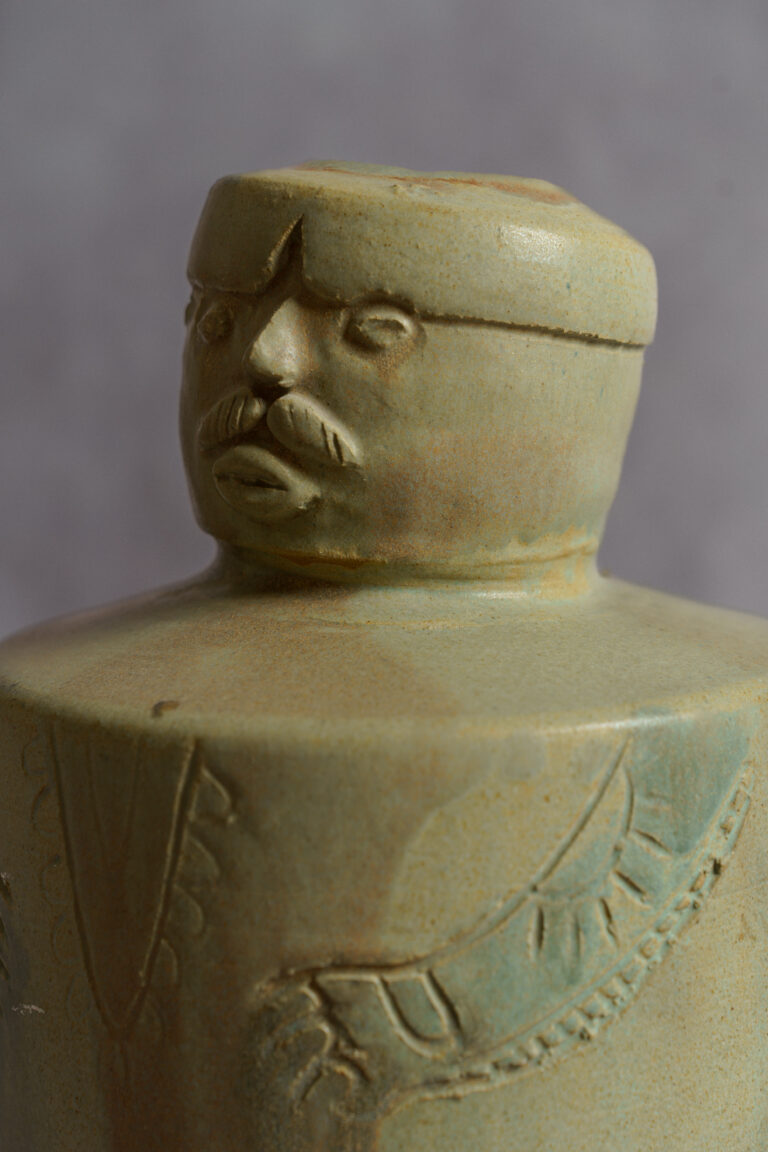Blockbusters have their place but these days – perhaps a COVID-induced aversion to crowds – I far prefer small exhibitions, especially when held in settings where the displayed works resonate with earlier collections and architecture. Such is the case with Simryn Gill’s exhibition entitled Naga Doodles at the Linnean Society in Burlington House. There are only four pieces, each suspended from a pier in the Society’s fine, double-height library. From afar they appear as mere blackish streaks down the centre of paper scrolls weighted with slim wooden battens. Closer inspection reveals exquisite patterns (like the shiny black fossil fish of Orkney) and even the odd ochre trace of colour. They are nature prints of snakes steam-rolled by trucks passing through the oil-palm plantations of western Malaysia, where the Singapore-born artist is episodically based. The corpses (some 90 in the whole series) were scraped from the tarmac, inked and printed onto Japanese rice paper – the artist describes them as ‘like found drawings, absent minded doodles’.

Installation view of Imprinting Nature: Simryn Gill’s Naga Doodles at The Linnean Society of London, 2023. Image Copyright: The Linnean Society of London.
Within a limited range each of the four prints has a distinct character, due to the vagaries of the mechanics of the squashing and the state of locomotion of the snake at the moment of its sudden death. One is broken into a terrifying zigzag, the delicate, curved vertebrae of its exquisite skeleton erupting from the skin at un-natural angles at various parts along its length; another could almost be alive, its distal portion in a sinuous position as if it had almost achieved the safety of the verge. One stalks vertically up the wall like a giant Peripatus, but its ‘legs’ are artefacts or, rather, fragments of tissue broken from the violence of the impact; the last, and largest, has less regular projections, like huge flakes of dandruff. And it is this one that links most closely with one of the carefully chosen exhibits from the Linnean Society’s own collections that so tellingly accompany the prints. An enormous python that roosted, overnight, in a hut on the island of Ambon in which the naturalist Alfred Russel Wallace also happened to be staying. This snake also met a violent death, despatched the following morning, its skin rolled up like a carpet-runner made of parchment.

Installation view of Imprinting Nature: Simryn Gill’s Naga Doodles at The Linnean Society of London, 2023. Image Copyright: The Linnean Society of London.
In the display case next to the skin is a nature-printed image made in Madras in 1857 by Henry Smith. Unlike Gill’s snakes, Smith’s specimen was artfully laid out in an elegant sinuosity, its two surfaces inked to yield a mirror-image pair when passed through a printing press. There is a history behind the contemporary work. Smith was a government printer, who claimed originality to his method of nature-printing (a process that has always been somewhat experimental), but one that was taken up by Hugh Cleghorn who in South India made many simple black prints of plant and tree parts as part of the earliest phase of the conversion of tropical forests into plantations: in his case for coffee and cinchona.

Installation view of Imprinting Nature: Simryn Gill’s Naga Doodles at The Linnean Society of London, 2023. Image Copyright: The Linnean Society of London.
Naga is both a Malay word for dragon and a Sanskrit one for semi-divine snakes. As Emilia Terracciano explains in her introduction to the exhibition snakes have been both ‘reviled and adored … lethal and awe-inspiring … [symbolising] both death and the renewal of life’. The deaths in Malaysian plantations are here transformed, if not renewed, by their display in Burlington House, but the prints evoke uneasy feelings. Is it right to see beauty in what results from violence – and not only to the unfortunate snakes, but to the manipulation of the environment that led to their deaths, the conversion of tropical rain forest to plantations of a palm native to Africa, to make oil that we all know is bad for us?

Snake, by Henry Smith. 1857. Ink on paper. (From Specimens of nature printing from unprepared plants, 1857, pl.100; Linnean Society of London). Image Copyright: The Linnean Society of London.
Imprinting Nature: Simryn Gill’s ‘Naga Doodles’, Solo Show by Simryn Gill, curated by Emilia Terracciano, in collaboration with Isabelle Charmantier of the Linnean Society, and with Richard Saltoun Gallery and Jhaveri Contemporary, the Library of the Linnean Society of London, 21 July – 30 June 2023.
#ImprintingNature:SimrynGill’s’NagaDoodles’ #SimrynGill #EmiliaTerracciano #IsabelleCharmantier #LinneanSociety #RichardSaltounGallery #RichardSaltounGallery #JhaveriContemporary #artreview #takeonart #takewriting #takecurator #artcurator #artwriting #artcritics #artpublications #curatorialwriting #artcriticism #arthistories #artdiscousre #artcollaboration #artcreatives #artcommunities #arthistory #criticaldiscourse














